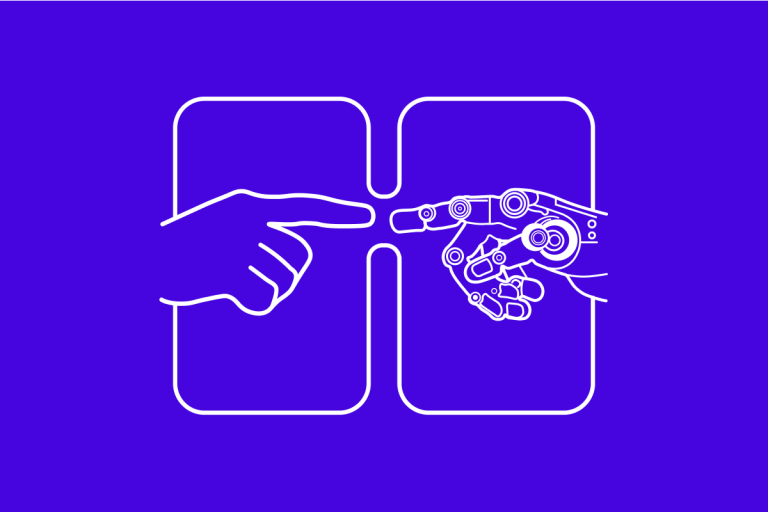
Design
Digital customer experience – the key to competitiveness
Janne Tuominiemi
The digital customer experience (CX) has become an even more critical competitive factor in modern business. In the age of artificial intelligence, customer expectations for services, service experiences, and products are constantly rising, and companies have two options: either invest in the digital customer experience or be left behind by competitors.
It’s important to note that customer experience isn’t limited to the purchase process in an online store; every digital interaction between a company and its customer is part of the experience. Developing the digital customer experience encompasses everything from design to content and technological touchpoints. The better these elements work together, the more likely customers are to be satisfied, and the better return on digital investment a company can expect.
Artificial intelligence (AI) is revolutionizing the customer experience
AI has radically transformed the business landscape, enabling faster, more personalized, and cost-efficient customer interactions. Just a few years ago, using AI seemed distant, but now companies are leveraging it to enhance customer experiences in unprecedented ways. With AI, businesses can automate processes, streamline customer journeys, and personalize communications more effectively. As a result, internet use and digital customer interactions are becoming more interactive and conversational.
AI is democratizing digital development: a high-quality digital customer experience no longer requires massive technology investments. AI enables A/B testing, content personalization, and more effective use of customer data, reducing the need for manual work. This allows companies to offer their customers smoother, faster, and more tailored services.
The price of a bad customer experience
What happens when customer experience is not prioritized? Dissatisfied customers do not hesitate to switch to competitors if they offer a better user experience. This does not just result in a single loss; dissatisfied customers readily share their experiences with others, which can lead to a broader negative brand perception and make customer acquisition more challenging.
A poor digital experience can also increase the burden on customer service, as frustrated customers turn to traditional service channels, such as phone support.
Moreover, the transition between services or devices is a critical moment in the customer experience. Simply put, if moving from a mobile app to a desktop view is not seamless, it can leave the customer with a negative impression, directly affecting the company’s success.
Creating a good customer experience
At Hion, we specialize in developing digital customer experiences in online environments. The online environment (e.g. websites and mobile applications) is at the core of a company’s digital customer experience. It is where the customer encounters the company for the first time, makes purchasing decisions, and seeks support.
We always start with the end customer’s needs. It’s essential to understand what expectations and needs customers have across different channels and touchpoints. Based on this understanding, we design an intuitive and seamless user experience that allows customers easy navigation and effortless interaction.
It’s also important to remember that developing customer experience is not a project but an ongoing data-driven improvement process. This ensures that the customer experience evolves and meets the changing needs of both the company and its customers.
Examples of development areas in online environments:
- Intuitive navigation: Users can quickly and effortlessly find what they are looking for, across all devices and in all situations.
- Personalized content recommendations: Relevant content helps customers make decisions and reduces the need for excessive clicking.
- Website speed optimization: Fast loading times are a crucial part of the customer experience and also improve search engine visibility.
- A/B testing: Ongoing analytics and testing ensure that the website’s content and design meet customer needs.
What are the biggest challenges?
There are always challenges in developing digital customer experience. The biggest obstacles relate to leveraging customer data, technology investments, and keeping up with continuous change. Shortcomings in legacy systems and integrations can slow down development, and companies need to be ready to invest in these areas.
However, one of the biggest barriers to an excellent customer experience is the internal mindset of the company. Too often, businesses focus on their internal processes and forget the true needs of the customer. It is crucial to place the customer at the center and understand their journey with the company’s services. Service design is a key area in successfully developing digital customer experience.
Future perspectives and the role of artificial intelligence
In the future, artificial intelligence will revolutionize digital customer experience even more profoundly. Automation, personalization, and intelligent interactive interfaces will be at the forefront as customer interactions become more individualized and efficient. With the help of AI and language models, websites and applications will become increasingly interactive and conversational.
At the same time, AI is increasing the number of companies investing in digital customer experience. Your business must be able to respond to this development quickly and flexibly. Investing in digital customer experience not only drives business growth but also deepens customer engagement with the brand.
Now is the time to act and ensure that your company’s digital touchpoints deliver the best possible results.
Do you need help developing your digital customer experience?
We’re happy to help! Leave your contact information, and we’ll be in touch with you soon!
"*" indicates required fields


